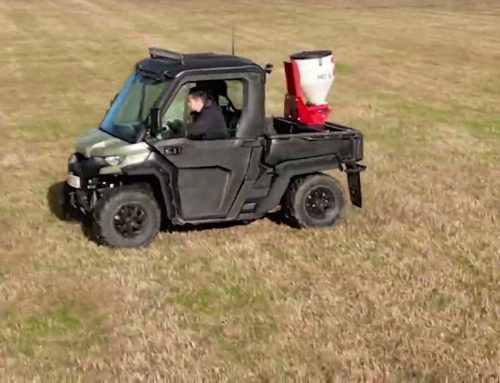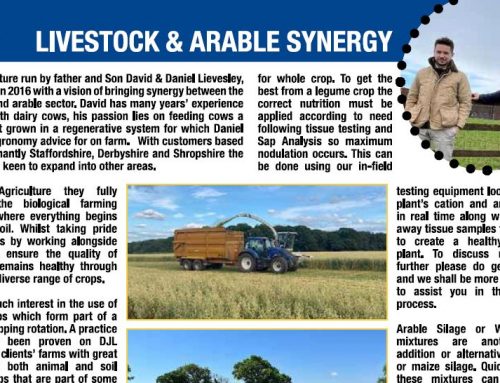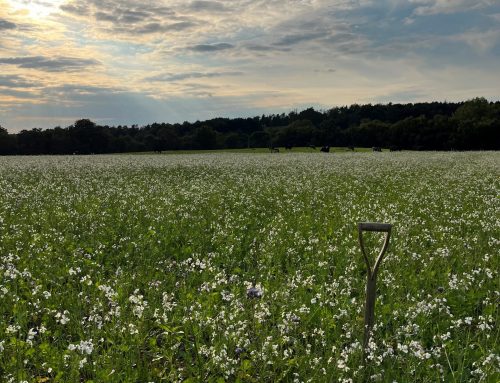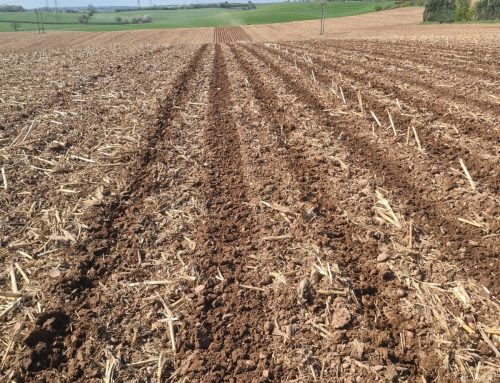March Newsletter 2022 – Issue 1


March Newsletter 2022
Issue 1
Re Seeding
Welcome to our first hard copy edition of this years monthly newsletter which is also available to view on our website www.djlagriculture.co.uk where you will also find our blog page which allows you to see what both David and Daniel are up to out on farm regularly throughout the year along with case studies about what farmers are doing differently on their farm for your interest.
When deciding which fields to re seed it is important to ensure everything agronomically has been considered such as soil sampling to ensure the fields PH and nutrient status is correct according to what you pan to sow. Field compaction is also crucial which can be done by taking a spade out and digging a square hole 50cm wide down to 40cm to assess the soil structure as well as carrying out a visual assessment looking at the colour, smell, cracks, pores, roots and earthworm numbers as this is important for grass health and production. Over the years soils can easily become compacted, restricting the movement of air, water, and nutrients down the soil profile. This will lead to bad soil biology restricting root growth leading to causes in stress which reduces the response to nutrients such as nitrogen. Soil aerators can be used to relive compaction at 10 -15cm.
Selecting the right re seeding mixture will be dependent on the above agronomics along with whether it is intended for grazing or silage and what livestock it will provide forage for. We can help you put together the appropriate mixture specifically tailored to your system putting together the right mixture of diploid and tetraploids with the inclusion of other grass species. Weed control will also need to be considered which can affect the choice of re seeding mixture.
Overseeding can be done if swards become damaged and ryegrass content dips below the desired 50%. Extra seed can be introduced by direct drilling, the seed rate may need to be increased if the ryegrass content is below 30%.
Herbal Leys and Legumes
With nitrogen prices at an all-time high establishing nitrogen fixing plant species will help you reduce the amount of artificial nitrogen you apply. White Clovers can fix up to 280kg N/ha although on average is more likely to be 150 Kg N/ha. It suits both grazing and silage leys and can increase yields by up to 15% depending on the clover content. Red clover can produce more nitrogen available to the grass sward. Clover is best established after a crop that has reduced the nitrogen content of the soil such as cereals or brassicas. Broadcasting is a good method of establishment as it does not bury the seed as deep as drilling does. Clover can also be under sown with a cereal crop that is intended for whole crop. Often grown with a mixture of companion ryegrasses. Sown in April through to August. Chicory as seed in the image below is a high-quality forage that provides essential minerals to grazing livestock. With a deep taproot chicory does well in periods of drought. Chicory will grow once soil temperatures are above 10 degrees. The addition of clover will help reduced nitrogen as chicory is not a legume so doesn’t fix nitrogen. To get the best from a legume crop the correct nutrition must be applied according to need following tissue testing and Sap Analysis so maximum nodulation occurs. This can be done using our in-field testing equipment looking at the pants cation and anion status in real time along with sending away tissue samples for analysis to create a healthy balanced plant.
To discuss re seeding further please do get in touch and we shall be more than happy to assist you in the decision process.






